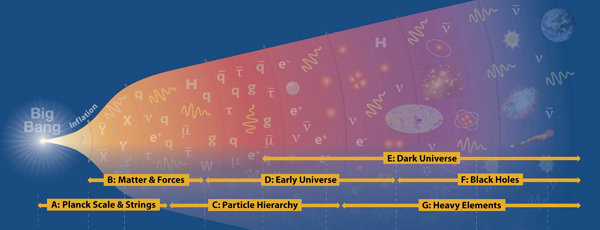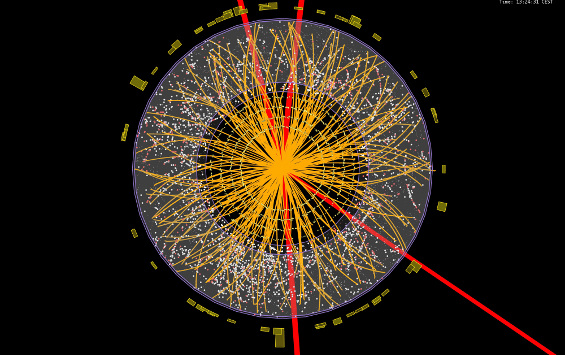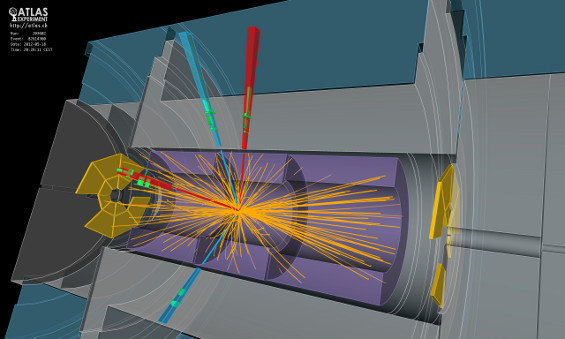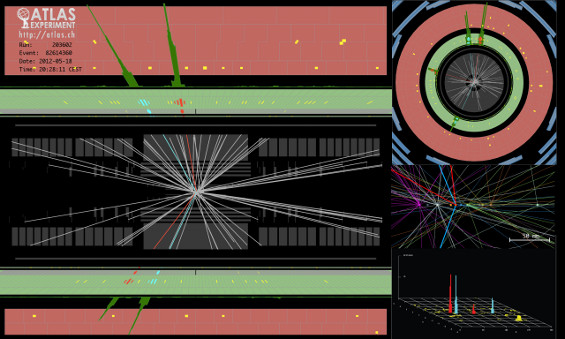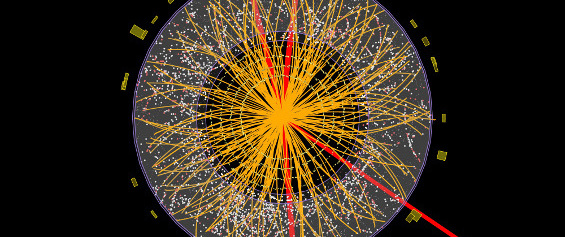
- Detection of a Higgs candidate on 10 June 2012 at the ATLAS detector at CERN. (© CERN)
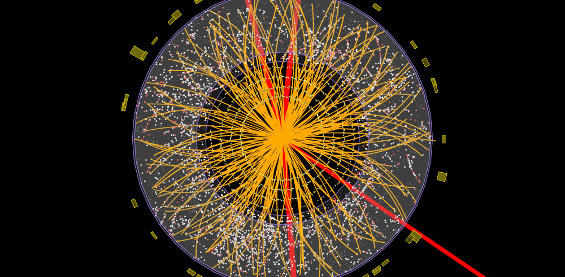
- Simulation of Higgs particle decaying in the ATLAS detector at CERN. // © CERN
The young Universe was a scene of very rapid change with different forms of matter. Scientists in Research Area D investigate these phases. At 10^-36 seconds after the Big Bang, which is an incredibly short period with 35 zeros after the decimal place, the Universe was unimaginably hot with a temperature of 10^29 degrees Celsius. Then, the Universe was populated by force particles and matter particles (the latter formed by quarks and leptons). One assumes that three of the four fundamental forces were unified in a single force in this period and therefore one refers to the “Grand Unified Theory” (GUT) – the strong force (holding the quarks together and with that also the atomic nuclei), the weak force (which is also responsible for radioactivity) and the electromagnetic force. Only gravity “stepped out of line”.
After the GUT era, the strong force was the first to separate. The Universe expanded rapidly during this transition and cooled off at the same time. Thereafter, weak and electromagnetic forces also separated from each other. With the now independent forces, the elementary particles quarks and leptons also obtained their characteristics, as we now know from laboratory experiments. The strong force glues quarks together to form protons and neutrons, thus creating the building blocks of atomic nuclei. Since protons and neutrons make up the group of hadrons, this process is also referred to as hadronization.
Another objective of scientists in Research Area D is the search for the Higgs boson – a force field that gives mass to elementary particles. The Higgs particle is intended to be generated experimentally in the LHC (Large Hadron Collider) at CERN. In this accelerator experiment, protons collide with very high energies. During the subsequent decay, scientists have to filter out the “Higgs” from more than a billion irrelevant events.

